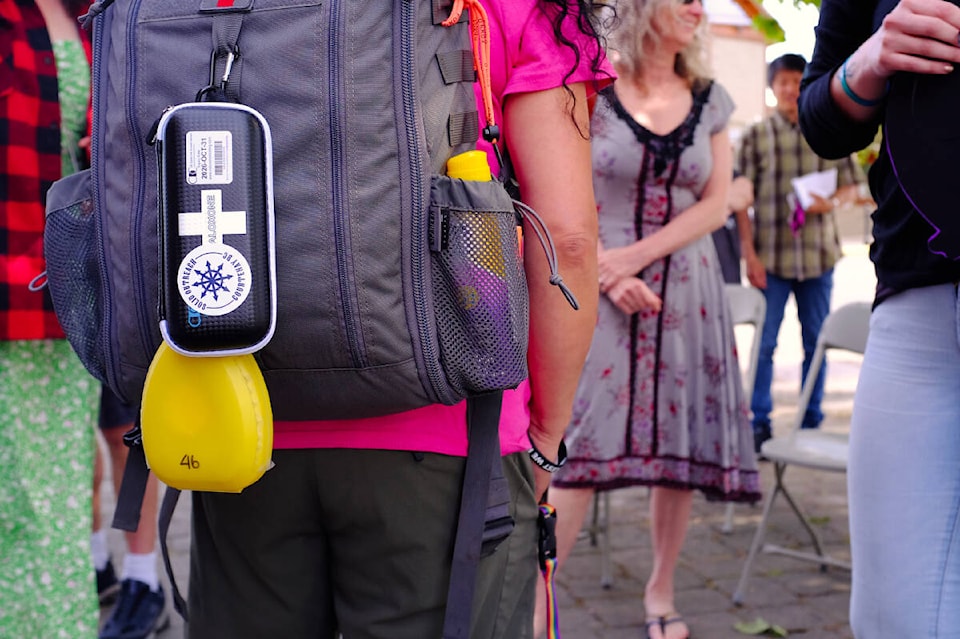The BC Coroners Service says the number of children dying from the toxic drug crisis is rising and that fentanyl is largely to blame.
The service evaluated deaths over the last decade and found the yearly average has nearly doubled from 13 a year between 2014 and 2018 to 25 a year between 2019 and 2023. The most recent five years amount to the deaths of 126 kids under the age of 19.
The coroners service detailed the dramatic increase in a new report released on Tuesday (May 28), in it emphasizing that fentanyl was detected in 83 per cent of those 126 deaths. The introduction of the toxic synthetic opioid into the unregulated market has been “one of the main drivers” of the worsening crisis, the service said.
In addition to fentanyl, methamphetamine was detected in 30 per cent of deaths, cocaine in 19 per cent, other opioids – such as heroin, morphine or codeine – in 21 per cent, alcohol in 15 per cent and benzodiazepines in 35 per cent of deaths.
Hydromorphone, a prescribed pain killer and safer supply option in B.C., was also found in 13 per cent of deaths. The coroners service noted that in the majority of those cases, the hydromorphone was unlikely to have contributed significantly to the child’s death and that it was never the sole substance consumed.
The coroners service also found that certain youth and children were at a higher risk than others. Those who had spent time in ministry care made up 66 per cent of deaths, and those who had either been diagnosed with a mental health disorder or shown signs of one made up 67 per cent of deaths.
Contrary to stereotypes about drug use, the vast majority of deaths did not occur outside or on the street. Of the 126 kids who died, 92 passed away inside private residences, 15 died inside other residences – such as recovery homes, hotels or shelters –, 14 died outdoors and five died in other locations.
About half of the children are known to have been using alone, while another 24 per cent are believed to have been using with someone else. The coroners service says it doesn’t know yet whether the final 25 per cent were alone or not.
Broken down by age, 11 of the 126 children were 13 or younger, 40 were aged 14 to 16 and 75 were aged 17 to 18. There was a near equal split between genders, with females making up 64 of the deaths and males making up 62.
By region, Vancouver and Greater Victoria saw the greatest number of children pass away, with 15 and 14 deaths, respectively. They were followed by Kamloops with eight deaths, and Abbotsford, Maple Ridge, Nanaimo and Surrey with six deaths each.
READ ALSO: ‘Sam had just proposed to me’: Comox Valley sees 3 overdose deaths in 1 week
In response to the report, B.C. Greens leader Sonia Furstenau called for increased drug checking sites, mental health supports and education.
She noted that on Vancouver Island, where 35 deaths were recorded over the last five years, there is only one drug checking site, located in Victoria. Across B.C., the province says there are 119 sites that can test drugs.
“These services are essential for people to understand what they are consuming,” Furstenau said.
She urged the province to create safe spaces where children and youth can access mental health and harm reduction supports without feeling judged.
“Rather than stigmatizing, we should focus on informing and supporting our youth to make healthier decisions. We must equip our children with accurate information about drugs and harm reduction practices.”
BC United MLA and mental health and addictions shadow minister Elenore Sturko also commented on the report.
“We must tell kids that all drugs are dangerous. Today’s report on child & youth toxic drug deaths, highlights the NDP’s failure to provide proper education around B.C.’s opioid crisis,” she said in a post to X.
Minister of Mental Health and Addictions Jennifer Whiteside said in a statement to Black Press Media that they are urgently working to build out a network of mental health and addictions supports for youth. She also noted that they are currently running a youth-focused prevention and education campaign in transit and on social media to inform children about the dangers of drug use.
READ ALSO: Sharp rise in OD deaths demands better policies for those in their 20s, 30s: study
